Bluetooth Wind Meters: Essential Tools for Kiteboarders
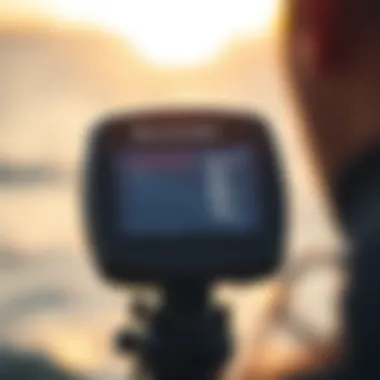
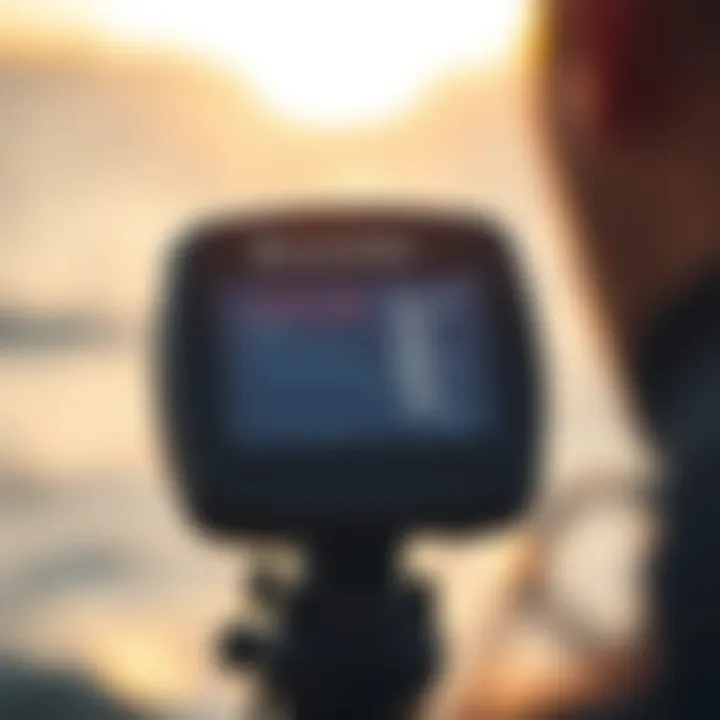
Intro
In the captivating world of kiteboarding, where the thrill of harnessing wind aligns with the artistry of gliding over water, the right information can make the difference between a mundane outing and an exhilarating adventure. One key player aiding in this domain is the Bluetooth wind meter, a device poised to revolutionize how kiteboarders engage with their environment.
This article will provide a thorough examination of Bluetooth wind meters, revealing their paramount role in empowering kiteboarders with precise and real-time wind data. With factors like wind speed and direction heavily influencing kite performance, understanding these metrics can elevate not just individual skill levels but also overall enjoyment on the water.
By dissecting discussions around the mechanics of Bluetooth technology, benefits over traditional wind measuring tools, ideal settings for their application, and practical advice on selecting the best gear, kiteboarding enthusiasts can gain a nuanced perspective on integrating technology into their practices.
As we venture deeper into this guide, both newbies finding their footing in the sport and veterans looking to optimize performance will find valuable insights that blend technology with the timeless connection to wind and water.
Preamble to Wind Measurement in Kiteboarding
Understanding wind measurement is crucial for kiteboarding enthusiasts at all levels, from those just catching their first gust to seasoned riders slicing through the waves. Kiteboarding relies heavily on the interplay between the rider and the wind. Accurate wind data empowers kiteboarders to make informed decisions, fine-tuning their gear selections and riding techniques. The relationship between wind strength, direction, and rider performance is not just a matter of convenience; it’s often the difference between thrill and peril on the water.
The Importance of Accurate Wind Data
Accurate wind data can be likened to a lighthouse guiding a ship through treacherous waters. Without reliable information, kiteboarders could be left floundering in hazardous conditions. Wind speed influences everything from how well the kite inflates, to its responsiveness, to the overall ease of navigating the waves. Relying on outdated or incorrect information could not only lead to missed opportunities for exhilarating sessions but could also put riders at risk.
When a kiteboarder steps onto the water, knowing the exact wind direction and strength allows them to tailor their equipment accordingly. This might mean choosing a larger kite for lighter winds or a smaller one when conditions are gusty, which ultimately adds a layer of safety and increases the enjoyment of the sport.
Overview of Measurement Instruments
The landscape of wind measurement instruments is diverse, ranging from traditional anemometers to modern Bluetooth wind meters.
- Traditional Anemometers: These are the tried-and-true devices that often involve spinning blades or cups to measure wind speed. While dependable, many traditional devices lack the connectivity features of their digital counterparts.
- Digital Wind Meters: These often provide more accurate readings and can display additional data, like wind direction, at a glance.
- Bluetooth Wind Meters: Emerging at the forefront of technology, these devices not only measure wind conditions but also transmit data in real-time to smartphones or tablets, allowing for immediate access to vital information. This kind of connectivity means riders can stay informed while they focus on their riding rather than fumbling with equipment.
In a world where technology is king, having a Bluetooth wind meter is almost like having a co-pilot; it takes the guesswork out of wind conditions. Combining the prowess of traditional measurement methods with modern technology, Bluetooth wind meters facilitate a more interactive and safer kiteboarding experience. With these tools, kiteboarders are becoming more connected to their environment, leading to better, more thrilling sessions across the board.
Understanding Bluetooth Technology
Having a solid grasp of Bluetooth technology is crucial for kiteboarders relying on wind meters for accurate data during sessions. This technology bridges the gap between measuring devices and user-friendly applications, providing essential insights in real-time. With wind conditions fluctuating, being in sync with reliable data can make the difference between a safe, enjoyable ride and a potentially hazardous situation on the water. In this section, we will explore the basics of Bluetooth communication, its practical advantages for kiteboarders, and how these factors contribute to enhancing the overall kiteboarding experience.
Basics of Bluetooth Communication
Bluetooth operates on the principle of short-range wireless communication, using radio waves to transfer data between devices. It allows various gadgets—like smartphones, tablets, and Bluetooth wind meters—to connect without tangled wires. The protocol was developed to facilitate seamless interaction between devices while consuming minimal power.
A few noteworthy aspects enhance its functionality:
- Low Energy Consumption: This ensures that Bluetooth devices, such as wind meters, can run longer without needing constant recharging or changing batteries.
- Robust Pairing Process: The ability to pair devices typically involves a simple process of discovering and connecting, which is user-friendly even for those who are not tech-savvy.
- Reliable Data Transmission: Bluetooth provides stability in communication, making it a dependable choice for kiteboarders who require accurate information while on the move.
This framework allows wind meters to relay wind speed, direction, and other critical parameters directly to a smartphone or data collector, which is essential for making informed decisions quickly.
Advantages of Bluetooth in Real-Time Data Sharing
Real-time data sharing is arguably one of the standout features of Bluetooth technology. In situations where conditions can shift at a moment's notice, having the ability to access or modify data instantly can be a game-changer. Here are some distinct advantages:
- Instantaneous Updates: Kiteboarders can receive immediate updates about wind conditions, enabling swift adjustments to gear or techniques.
- Centralized Monitoring: A smartphone acts as a hub where multiple readings from different devices can be seen at once. This feature is especially advantageous during competitions or organized events, where consistent monitoring can influence performance.
- User Experience Enhancement: Many applications connected to Bluetooth wind meters offer tailored insights and historical data analytics, helping users improve skills and strategies.
"With Bluetooth technology, kiteboarders are no longer left scratching their heads about wind conditions. They can access the latest data right at their fingertips."
In summary, understanding and leveraging Bluetooth technology tremendously enhances the capability of wind meters for kiteboarding enthusiasts. Its combination of reliability, ease of use, and instant data access fundamentally reshapes how kiteboarders interact with wind conditions, ultimately magnifying the thrill and safety of the sport.
What is a Bluetooth Wind Meter?
In the realm of kiteboarding, understanding and utilizing the right tools can significantly influence the overall experience. This is where the role of a Bluetooth wind meter comes into play. It serves as a pivotal instrument that elevates a kiteboarder’s ability to make informed decisions based on precise wind data. A Bluetooth wind meter bridges the gap between traditional wind measuring devices and the modern technological needs of kiteboarding enthusiasts, allowing for real-time assessments of wind conditions.
Definition and Functionality
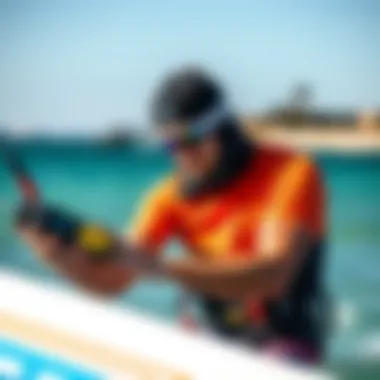
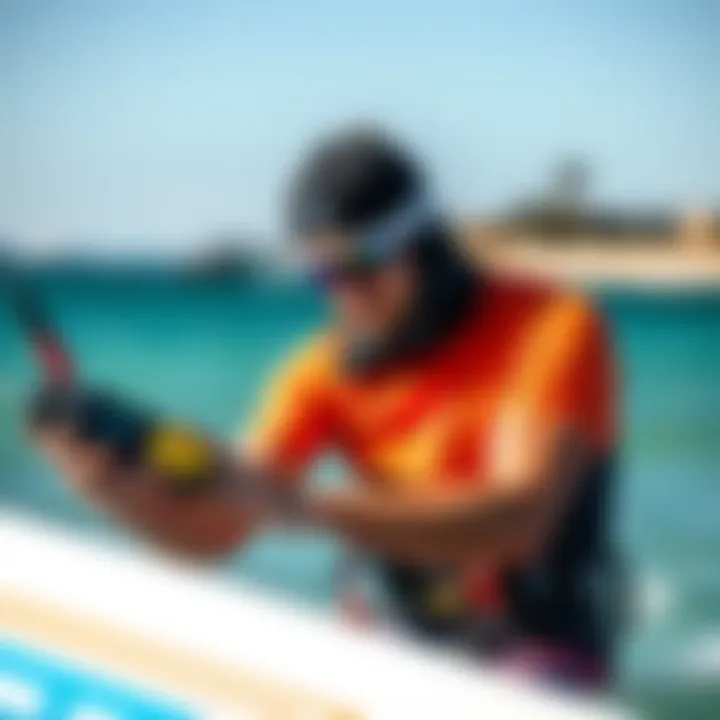
A Bluetooth wind meter, at its core, is a device designed to measure wind speed and direction, transmitting this data to a smartphone or other digital display via Bluetooth technology. This functionality is crucial for a sport that thrives on accurate wind data. Unlike classic anemometers, which often require manual readings and lack connectivity, Bluetooth wind meters are engineered for immediacy and ease of use.
These devices typically include a wind vane to detect direction and a rotating cup or blade mechanism to determine speed. When connected to an app on a mobile device, users can see live updates of the wind conditions right at their fingertips. This means no more guessing about whether conditions are suitable or safe for kiteboarding—everything needed is displayed on a screen, often with historical data and forecasts included.
Components and Design Features
The design of a Bluetooth wind meter is tailored to meet the demands of outdoor sports, often featuring:
- Durable Materials: These devices are often built to withstand harsh environmental conditions like water exposure, wind, and impact.
- Compact Size: Portability is critical. Many Bluetooth wind meters are lightweight and small enough to fit in a pocket or attach to gear without adding significant bulk.
- User Interface: A well-designed interface on the accompanying mobile app is essential. Users should navigate easily to view wind speed, gusts, and directions, sometimes even in real-time.
- Battery Efficiency: Since kiteboarding often takes place over extended periods, efficient battery use is a must. Many Bluetooth wind meters come equipped with long-lasting batteries or energy-saving features.
"Having the right wind meter has changed the way I experience kiteboarding. Real-time data that I can trust makes all the difference."
— A seasoned kiteboarding enthusiast
Integrating these components into a cohesive device not only enhances functionality but also ensures that kiteboarders have access to accurate wind measurements that can make or break a session on the water.
In summary, Bluetooth wind meters represent a leap forward in kiteboarding technology, merging traditional measurement methods with the advantages of modern connectivity and user-focused design. Understanding these devices’ definition, functionality, components, and design features is vital for kiteboarders looking to enhance their sessions.
Benefits of Using a Bluetooth Wind Meter in Kiteboarding
Using a Bluetooth wind meter in kiteboarding is all about gaining an upper hand in navigating the conditions of the sport. The wind can be unpredictable, so having accurate, real-time data at your fingertips is crucial. These devices not only help kiteboarders make informed decisions but also significantly enhance their overall experience on the water. As we explore these benefits, it’s clear that technology has woven itself into the fabric of modern kiteboarding, making this sport even more exhilarating and safe.
Enhanced Accuracy and Precision
The cornerstone of effective kiteboarding greatly hinges on wind precision and accuracy. Traditional methods of measuring wind often fell short, relying on estimations and sometimes outdated equipment. Bluetooth wind meters, however, operate with cutting-edge sensors that provide live readings. This means, as a kiteboarder, you can get up-to-date information on wind speed and direction, which evolves as conditions change.
"With a Bluetooth wind meter, you're not just riding the wind; you're mastering it."
Imagine planning your session based on a reading that says the wind is blowing at a steady 15 mph, only to discover on the water that it's gusting wildly. With Bluetooth devices, you have direct access to reliable metrics, allowing you to adjust your technique or gear accordingly. You not only maintain safety but also boost performance, ensuring that every ride is as thrilling as it should be.
User-Friendly Interfaces
The design of these wind meters takes user interaction into consideration, especially for those who may not be tech-savvy. A well-designed Bluetooth wind meter typically comes with an intuitive interface. Many of these devices connect seamlessly to mobile applications, making navigation simple. You can easily track changes in wind conditions and get alerts, all through a few taps on your smartphone.
Navigating through such applications generally includes vital stats that are displayed in clear formats like graphs or simple statistics, allowing you to see what's happening in real time. This user-friendliness means you can focus less on fiddling with the device and more on what really matters—enjoying your time on the water.
Data Accessibility via Mobile Applications
In today's fast-paced world, access to information is key. Bluetooth wind meters bridge the gap by providing kiteboarders with data at their fingertips. These gadgets synchronize with mobile applications that can show you historical data, trends, and predictions. You can view past wind conditions and compare them with current scenarios, which helps in planning future sessions.
Moreover, having this data readily available means you can adjust your gear based on historical accuracy. Did you know many riders even share this information with friends or groups via social media? Community discussions can get a boost with real-time statistics helping everyone engage.
No more wondering if the conditions were right for your next big jump or trick. You can refer back to data to understand what works best under specific conditions. In essence, Bluetooth wind meters do much more than measure; they open doors to informed kiteboarding decisions—transforming how enthusiasts interact with the ever-changing natural elements.
Comparative Analysis: Bluetooth Wind Meters vs. Traditional Anemometers
When it comes to measuring wind speeds for kiteboarding, the debate often swings between Bluetooth wind meters and the more conventional traditional anemometers. Understanding this difference is crucial for both novice and experienced kiteboarders alike, as it can influence every ride from the planning stage all the way through post-session analysis. The following sections elaborate on the various aspects that set these two types of devices apart.
Measurement Techniques
The way wind meters measure speed and direction plays a significant role in choosing the right tool for kiteboarding.
- Bluetooth Wind Meters typically employ rotating cups or ultrasonic sensors. These sensors calculate wind speed based on the movement of air across them, with data converted into readable formats via Bluetooth. This allows data to be streamed directly to smartphones or other devices, offering real-time insights.
- Traditional Anemometers, on the other hand, often consist of mechanical devices relying on spinning cups or blades connected to dials that display readings. While reliable, these devices can lack the immediate accessibility of Bluetooth meters.
The data accuracy is often cited as a differentiator. While both can be precise, Bluetooth models tend to offer enhanced capabilities for calibration and updating the software, thus keeping them on the cutting edge of accuracy.
Portability and Durability
Another element to consider is how portable and durable these devices are, especially for kiteboarders who need to travel to different locations frequently.
- Bluetooth Wind Meters are generally lightweight and compact, making them easy to stash in a gear bag or pocket. They can often withstand a variety of weather conditions, but their electronic components can be vulnerable if exposed to saltwater or extreme impacts.
- Traditional Anemometers might not be as user-friendly in terms of size but can be engineered for exceptional ruggedness. Many of these devices are built with weather-resistant materials, suitable for harsher conditions. However, their bulkiness can sometimes be a hinderance.
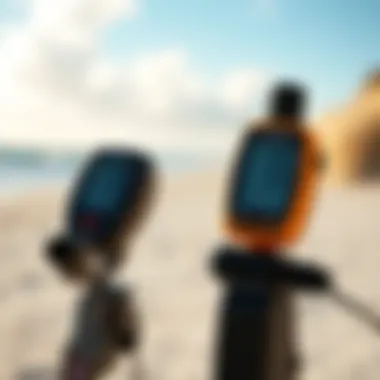
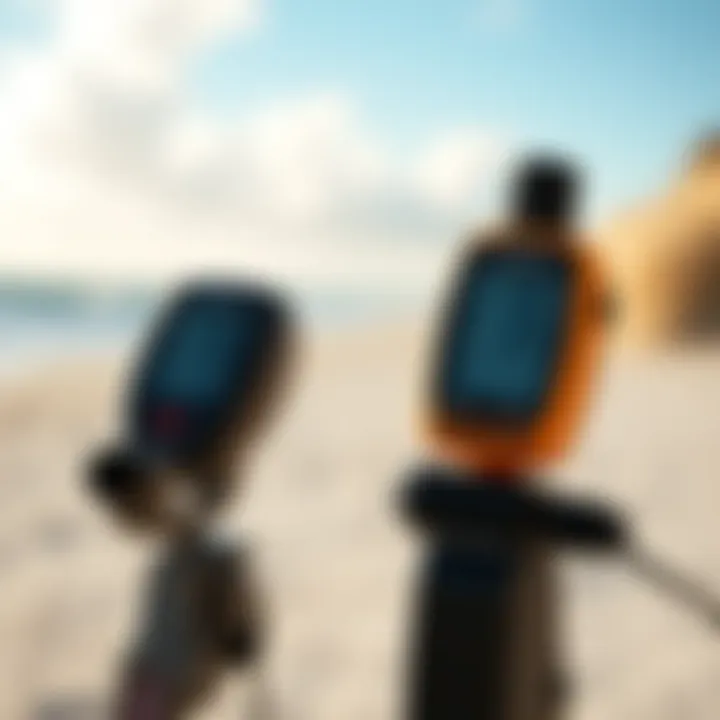
For kiteboarders scouting for a device, portability may tip the scales toward Bluetooth wind meters, provided they take care of the device's electronic aspects while using them amidst the elements.
Cost Considerations
Finally, we can't overlook the cost factor, as it often dictates what equipment participants in kiteboarding can realistically invest in.
- Bluetooth Wind Meters usually come with a higher price tag. However, considering their advanced technology and real-time connectivity, many users feel that the investment pays off in enhanced performance and safety on the water.
- Traditional Anemometers typically present a lower-entry price point. Many less advanced models can be quite affordable, but often lack the features that enhance user experience, leaving kiteboarders needing to opt for upgrades in the long run.
In summary, while the initial outlay for Bluetooth wind meters might cause some hesitation at first, their long-term benefits can be substantial, especially for those who are serious about kiteboarding. The costs associated with traditional methods could eventually add up, requiring further investment as skills improve.
"Selecting the right wind meter involves weighting not just price but a balance of features, usability, and reliability tailored for the demands of kiteboarding."
Combining the insights above will help kiteboarding enthusiasts make informed decisions that enhance their experience and performance. Whether it’s embracing modern Bluetooth technologies of wind meters or sticking to the tried and tested traditional anemometers, knowing the strengths and weaknesses of each makes all the difference in optimizing the ride.
Choosing the Right Bluetooth Wind Meter
Selecting a Bluetooth wind meter isn't just about grabbing the first device that pops up online. It’s about understanding how each model aligns with your unique kiteboarding needs. With so many options out there, making an informed choice can significantly impact your sessions on the water.
As kiteboarding relies heavily on precise wind data, choosing the right device ensures you're gearing up for success. A good wind meter can provide insights into wind speed, direction, and other factors—vital components for optimal performance and safety.
Key Features to Consider
When it comes to picking a Bluetooth wind meter, it pays to understand what features are most critical for kiteboarding. Here are some key elements to keep in mind:
- Measurement Range: Different meters offer varying ranges of wind speeds. Ensure it covers low and high speeds that kiteboarders typically encounter.
- Data Refresh Rate: Some devices provide more frequent updates than others. A higher refresh rate can give you near real-time information, allowing for on-the-spot decisions.
- Mobile App Integration: A seamless app interface can enhance your experience, offering analytics and even storing historical data to spot trends in conditions.
- Calibration Options: Some meters allow user calibration. This feature can prove invaluable as conditions change, ensuring your readings stay reliable.
- Durability and Water Resistance: Kiteboarding leads to exposure to salty water and rugged conditions. A meter designed to stand up to these elements is critical.
While these features are what you should keep an eye out for, it’s always smart to read user reviews. They can deliver real-world insights that specifications might not capture.
Evaluating Brand Reliability
Brand reliability often acts as a bellwether for potential performance and durability. You might stumble upon a dazzling marketing campaign, but a brand’s reputation should hold more weight than just flashy promises. Here are a few tips on how to dissect brand reliability:
- Established Brands: Look for brands that have been in the wind measurement game for a while. Established names often stand behind their products with warranties and customer support.
- User Feedback: Websites like reddit.com or kiteboarding forums can be goldmines for genuine feedback. Look out for discussions surrounding specific models—what users like or dislike can be illuminating.
- Customer Service: High-quality customer service can save you a headache down the line. Check how easily a company responds to inquiries and support requests.
- Industry Reviews: Websites like britanica.com or kiteboarding magazines often review products. Reading expert analyses can offer deeper understanding about reliability, performance, and value.
Adopting a meticulous approach to researching brands will serve you well. Diving into user experiences and expert reviews will provide clarity and guide you toward making a choice that feels right.
Remember, investing in the right Bluetooth wind meter isn't just a purchase; it’s about enhancing your kiteboarding experience and keeping safety at the forefront.
Practical Applications of Bluetooth Wind Meters in Kiteboarding
As kiteboarding continues to evolve as a sport, the demand for accurate wind data has become more crucial than ever. This is where Bluetooth wind meters come into the picture. These devices not only aid in ensuring safety but also enhance the overall kiteboarding experience. Let's delve into some practical uses of these meters, focusing on how they can be valuable throughout the kiteboarding process.
Pre-Flight Planning
Prior to even setting foot on the water, preparation is half the battle. In kiteboarding, understanding wind conditions is paramount. A Bluetooth wind meter provides real-time data that can be easily accessed through a mobile app. This makes planning for kite size and type much simpler.
By checking wind speed and direction before hitting the waves, riders can make informed decisions. Whether the conditions are too gusty for a smaller kite or perfect for that larger setup, having this data at hand can save time and potentially prevent misadventures on the water. Moreover, it allows kiteboarders to strategize their techniques or maneuvers considering the wind's behavior.
Real-Time Monitoring During Sessions
Once on the water, the value of a Bluetooth wind meter escalates. These devices enable kiteboarders to continuously monitor changing wind conditions. Whether you're catching air on a jump or cruising along, knowing the current wind speed is essential.
The Bluetooth technology allows for instantaneous updates which can be relayed to the rider's smartphone. This way, if wind conditions start to shift unexpectedly—say, a sudden gust or drop in speed—the rider can immediately adjust their technique accordingly. This responsiveness can significantly influence performance and safety. If a kiteboarder senses that they are underpowered or overpowered, they can react quickly rather than risk losing control.
Post-Session Data Analysis
After an exhilarating kite session, many riders are keen to analyze their performance. A Bluetooth wind meter not only records data during the session but also provides a wealth of information for later review. This can include averages for wind speeds, peaks, and even how the wind varied throughout the ride.
Such insights can be invaluable for honing skills. For example, if a rider notices that they performed best under certain wind conditions, they could focus on replicating those circumstances in future sessions. Additionally, these devices often come equipped with connectivity options that allow easy sharing of data with other kiteboarders or coaches for feedback.
Potential Limitations of Bluetooth Wind Meters

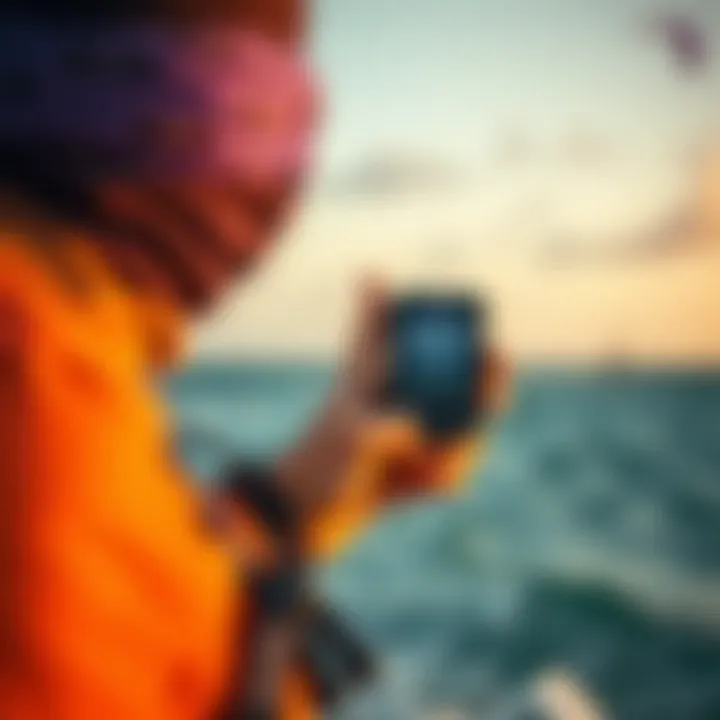
While Bluetooth wind meters hold great potential and advantages, they are not without their flaws. Awareness of limitations is crucial for kiteboarders, as they can directly impact performance and safety. Having insight into potential drawbacks enables users to make informed decisions before they gear up for a session. Here, we delve into two primary limitations: environmental interferences and battery life considerations.
Environmental Interferences
In the realm of wind measurement, environmental factors can play a mighty role. Bluetooth wind meters, while generally reliable, can face challenges from their surroundings. For instance, obstacles such as tall buildings or trees can disrupt wind streamlines, leading to inaccurate readings. This is particularly significant for kiteboarders who need precise data for optimal performance.
Moreover, cluttered environments—like crowded beaches or urban settings—can introduce noise in data transmission. Interference from other electronic devices can also lead to missed or erroneous readings. While the modern kiteboarder often depends heavily on technology, it's essential to remember that nature itself is unpredictable. Therefore, users should double-check readings against local knowledge or observe wind behaviors firsthand.
"Relying solely on technology can sometimes cloud the judgment that experience offers."
Tips to Mitigate Environmental Interferences:
- Positioning: Aim to set up your wind meter away from immediate obstructions.
- Data Cross-Verification: Always consider corroborating data from multiple sources.
- Routine Checks: Make it a habit to periodically test the accuracy of your devices under different conditions.
Battery Life Considerations
Another notable limitation of Bluetooth wind meters is battery life. These devices typically run on small lithium batteries, which often have a finite lifespan. Depending on usage, a wind meter can last anywhere from a few hours to several days. When kiteboarding, where conditions can change rapidly, battery failure can become a significant hassle. Imagine gearing up for a session, only to find your wind meter has given out.
It's also worth nothing that extreme temperatures can affect battery performance. Cold weather, for instance, can lead to quicker power depletion. Keeping this in mind, kiteboarders should plan accordingly. A proactive approach includes:
- Regularly charging or replacing batteries before sessions.
- Carrying a backup meter or a power bank to reduce risks of data loss during rides.
In sum, while Bluetooth wind meters engage kiteboarders with enhanced data reporting and user-friendly experiences, awareness of these potential limitations is essential. Understanding how environmental factors can skew data and managing battery life effectively ensures that kiteboarders remain informed and ready, making the most out of every session.
Innovative Trends in Wind Measurement Technology
With advancements in technology shaping how we interact with our environment, kiteboarding is not left behind, especially in the context of wind measurement. The importance of innovative trends in wind measurement technology lies in their ability to transform raw meteorological data into user-centered insights crucial for kiteboarders. This part explores the exciting developments on the horizon and their potential impact on kiteboarding experiences.
Future Developments in Bluetooth Features
The future of Bluetooth wind meters holds great promise for kiteboarding enthusiasts. As Bluetooth technology evolves, so does its capacity to deliver more sophisticated features. Expect to see enhanced data accuracy, enabling wind meters to gauge real-time changes in wind conditions with higher precision. This evolution will also extend to a broader measurement range, capturing fine variations that can affect performance.
Key aspects of these anticipated developments include:
- Faster Connectivity: Enhanced Bluetooth protocols will allow faster syncing between wind meters and devices, enabling users to receive instant feedback.
- Longer Range: Future models are likely to overcome previous limitations in distance, allowing kiteboarders to remain connected and receive data even from significant distances.
- Improved App Integration: As smartphones get smarter, so too will the applications that accompany Bluetooth wind meters. Look for tailored solutions that integrate predictive analytics to forecast best kiteboarding conditions based on historical data.
- User-Centric Designs: Increased attention to user experience will lead to designs that are simpler to operate, with minimal steps between data collection and interpretation.
Integration with Other Smart Devices
The potential for integration with other smart devices is a game changer for those in the kiteboarding community. As our gadgets become more interconnected, kiteboarders can expect a seamless experience that combines wind data with broader environmental measurements.
Imagine a scenario where your Bluetooth wind meter communicates not just with your mobile device but also with other smart equipment such as:
- Wearable Technology: Devices like smartwatches could relay wind data directly to the wrist, allowing for quick checks without pulling out a phone.
- Smart Helmets: With Bluetooth connectivity, helmets could provide heads-up displays of real-time metrics, ensuring the safest riding experience.
- Weather Stations: Integration with home weather stations might allow for a comprehensive understanding of local conditions, enabling better pre-flight planning for kiteboarders.
"The integration of Bluetooth wind meters with smart devices makes every kiteboarding session informed and safer. It creates a network of information that empowers kiteboarders to make calculated decisions."
Ending
In wrapping up our exploration of Bluetooth wind meters for kiteboarding, it's clear that these devices offer indispensable value for both amateur and seasoned kiteboarders. By integrating cutting-edge Bluetooth technology, the wind meters not only provide precise wind measurements but also enhance the overall experience on the water. Understanding this technology is vital because it can directly impact safety and performance, two paramount concerns for anyone in the sport.
Recap of Importance and Benefits
The significance of accurate wind data cannot be overstated. Kiteboarding relies heavily on understanding wind patterns, as they dictate the control kiteboarders have over their equipment. Using Bluetooth wind meters helps riders make quick, informed decisions about gear setups and maneuvers.
Some key benefits include:
- Real-time Data: Direct access to current wind conditions allows for timely adjustments during rides.
- User-Friendly Applications: Many devices sync with smartphones, providing easy-to-read data on screens that kiteboarders already know how to navigate.
- Portability: Most Bluetooth wind meters are designed to be lightweight and easy to carry, making them a practical companion during kiteboarding sessions.
Importantly, these wind meters can enhance safety. With accurate data at hand, riders can avoid overestimating their capabilities or underestimating dangerous winds. Thus, they can focus more on enjoying the ride instead of second-guessing the conditions.
Final Thoughts on Bluetooth Wind Meters in Kiteboarding
Reflecting on the journey through the intricacies of Bluetooth wind meters, it's evident that these tools are more than just gadgets. They symbolize the merging of technology with outdoor sports, bridging the gap between the thrill of kiteboarding and the precision required for optimal performance.
As kiteboarding progresses, so too will the technology that supports it. Future advancements will likely bring even more sophisticated features, further integrating Bluetooth wind meters with additional devices, like smartwatches or drones, offering a holistic view of conditions.
As kiteboarders, the onus is on you to embrace these advancements. The winds of change are blowing, and with the right tools, you'll not only ride the waves but master them. For more insights and discussions, consider delving into resources like Wikipedia, where technology meets community experiences, or join conversations on platforms like Reddit to see how others are harnessing the power of Bluetooth in their kiteboarding adventures.















